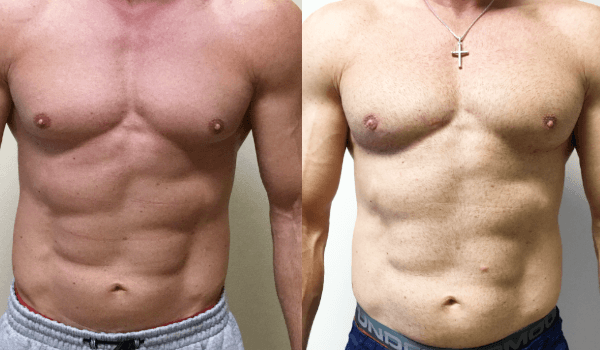What Is Male Gynecomastia?
Both women and men have breast tissue. Some obviously have more than others. In men, this tissue is firm and may cause the nipple to protrude. Sometimes, a patient is bothered by this appearance. This excess breast tissue may also be accentuated by the underlying fat. The combination of the two can oftentimes be even worse. This condition is known as male gynecomastia.
Male breast tissue develops during puberty. Male Gynecomastia – excessive growth – can happen during this time. It can be unsightly and it can be tender. Boys are often bothered by this, and Dr. Schneider himself remembers going to the family doctor at age 14 with this scenario and being told that there was nothing that could be done. Well, times have certainly changed!
Adult men may develop male gynecomastia as well. In adults, gynecomastia is produced by hormones and occurs either from anabolic hormone use or from some endocrinologic abnormality in their system.
Anabolic hormone use by itself does not usually cause male gynecomastia. What typically causes this effect is an abnormal ratio of testosterone to estrogen. This abnormal ratio often occurs as a result of poorly planned and poorly implemented post-cycle therapy.
Treatment for Male Gynecomastia
The first step in evaluating a patient with male gynecomastia is for Dr. Schneider to understand how the process developed. If the condition is as a result of puberty, weight gain, or steroid use, then the patient and Dr. Schneider can discuss treatment options.
If however, there seems to be some other underlying cause, then some medical tests might be necessary as a first step.
Surgery to correct male gynecomastia depends upon the physical abnormality: excess breast tissue, excess fat, or a combination of both. If fat is the underlying problem, liposuction alone may produce an excellent result. If excess male breast tissue is the cause of the problem, and it usually is, then the most successful technique involves cutting the tissue out. If the problem is a combination of breast tissue and fat, which is the most common presentation, then both surgical excision and liposuction are performed.
Surgical excision is performed through a small curvilinear incision under the nipple. The nipple is lifted and the underlying breast tissue is cut out. Since this leaves a small pocket under the skin, a small tube is inserted to help flatten the area and remove fluid that may collect. This drain is removed several days later.
The operation takes between 1 and 1.5 hours and is performed with the patient asleep in our office AAAHC certified surgery center. Patients go home the same day, and most are able to return to work within 3-7 days. Men may begin exercising 2 weeks after the procedure.
Male Gynecomastia Success
The biggest issue with successful gynecomastia surgery is removing enough breast tissue. Dr. Schneider has used in the past many different technologies to remove the breast tissue without cutting out. However, with this technique, Dr. Schneider found that oftentimes not enough tissue was removed. In his opinion, the best option when there is a significant amount of breast tissue present is to surgically excise it.Dr. Schneider sees many patients for secondary male gynecomastia surgery to remove tissue that was inadequately previously treated in other offices.


















